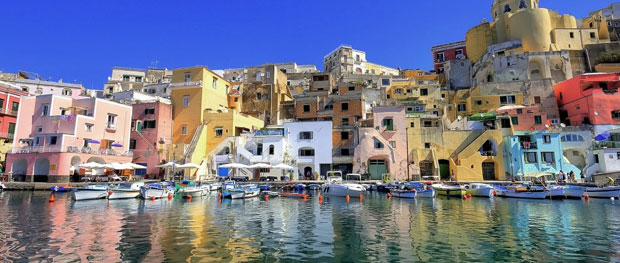

Regions
All about Italy regions
There is a strong sense of regional identity in Italy, as it was not unified until 1871 when Rome became the capital. The countryside is dotted with castles, fortresses and walled villages, reminders of a turbulent past when regions fought each other for control of territory.
There are 20 regions, each of which has its own capital.
|
REGION |
CAPITAL |
| Lombardy |
Milan (Milano) |
| Trentino Alto Adige | Trento |
| Friuli Venezia Giulia |
Trieste |
| Veneto | Venice (Venezia) |
| Emilia Romagna |
Bologna |
| Marche |
Ancona |
| Abruzzo |
L’Aquila |
| Molise |
Campobasso |
| Puglia |
Bari |
| Basilicata |
Potenza |
| Calabria |
Catanzaro |
| Campania |
Naples (Napoli) |
| Lazio |
Rome |
| Umbria |
Perugia |
| Tuscany |
Florence (Firenze) |
| Liguria |
Genoa (Genova) |
| Piedmont |
Turin (Torino) |
| Aosta Valley |
Aosta |
| Sardinia |
Cagliari |
| Sicily |
Palermo |
For more information about the geography of each region we can recommend a useful Italian site (in English!). Click on www.mediasoft.it/italy.
Each region is then divided into a number of provinces which take their names from the main towns. The provinces themselves are then further divided into smaller administrative bodies called comune, which are a kind of local council.
As Italian car numberplates show the province in which they were registered, this can form the basis of a useful game for bored children when travelling! For example:
| BO |
Bologna |
| FI | Firenze (Florence) |
| GE |
Genova |
| MI | Milano |
| NA |
Napoli |
| PI |
Pisa |
| PG |
Perugia |
| TO |
Torino (Turin) |
| VE |
Venezia (Venice) |
| VI |
Vicenza |
Cars registered in Rome show the full word ROMA.

and talk to one of us, not a call centre info@onestopitaly.com
© 2000-2025 One Stop Italy. 19 Childs Road, Hethersett, Norwich NR9 3HW, UK